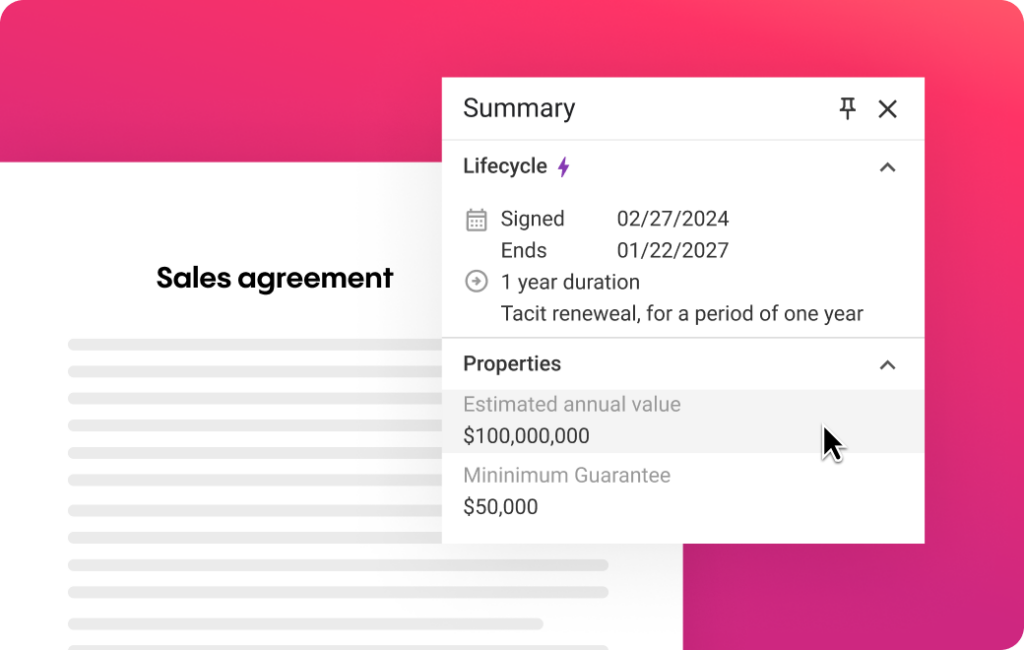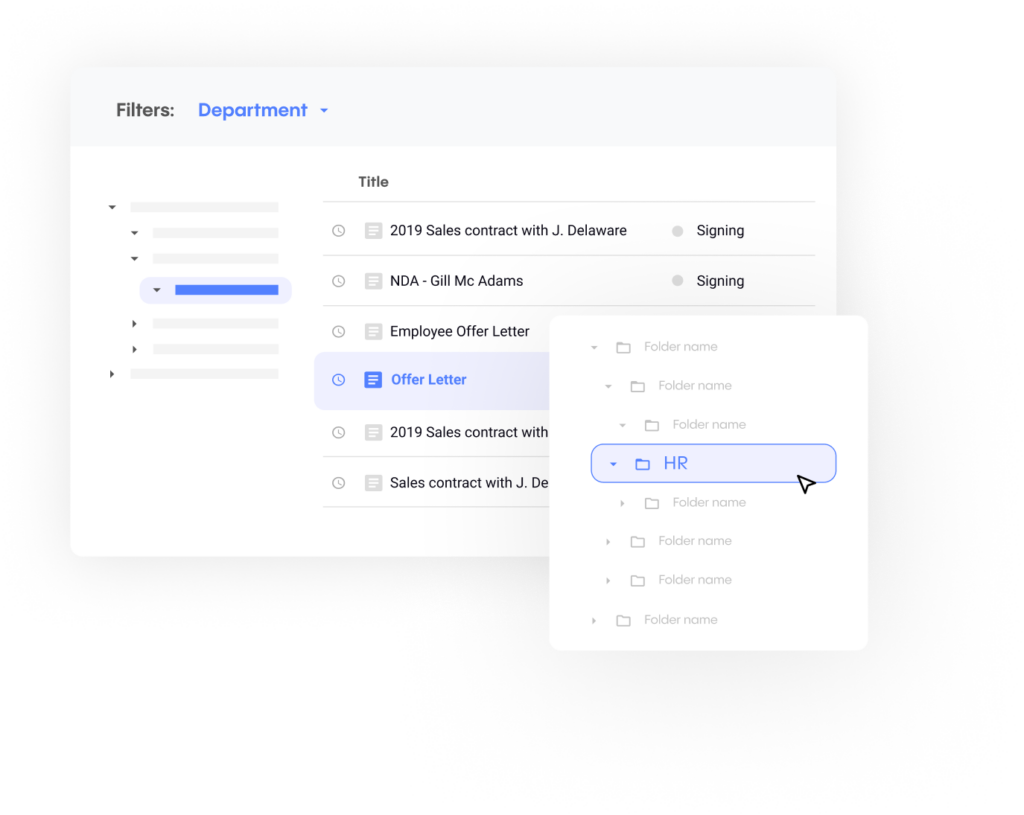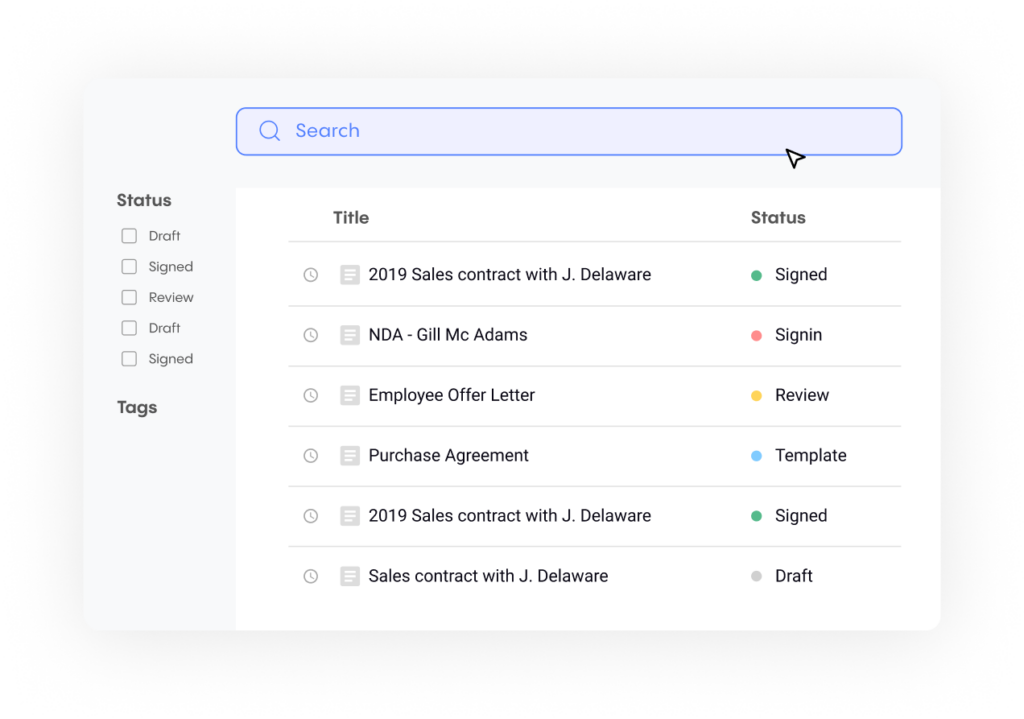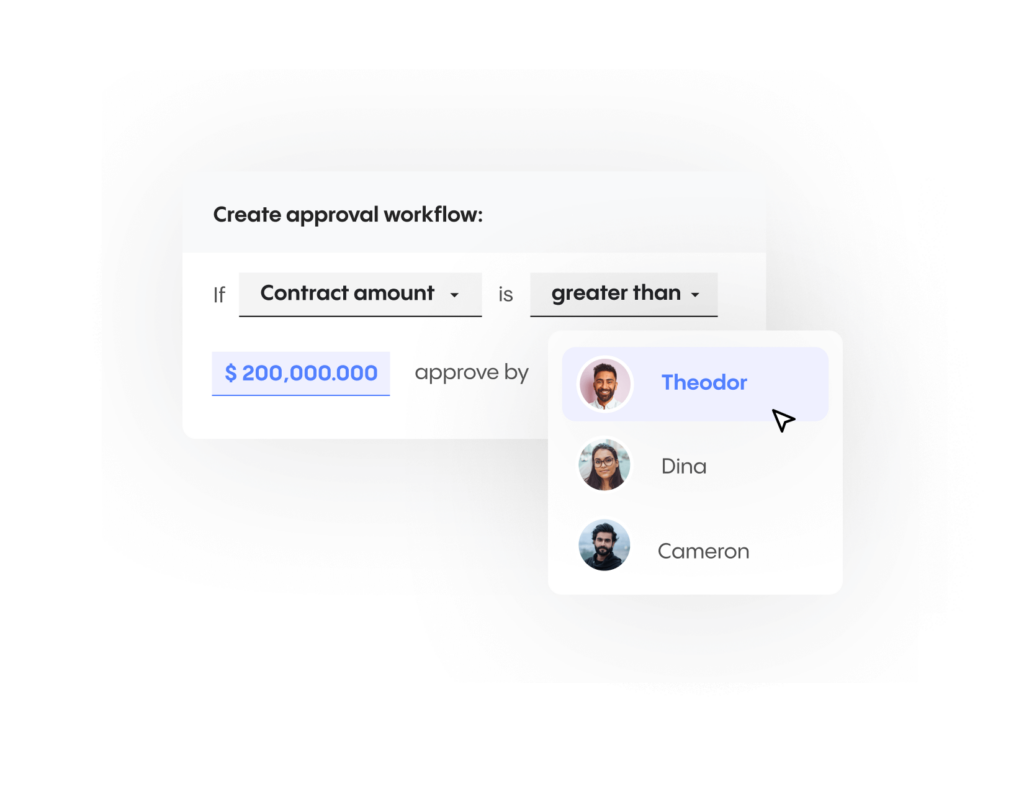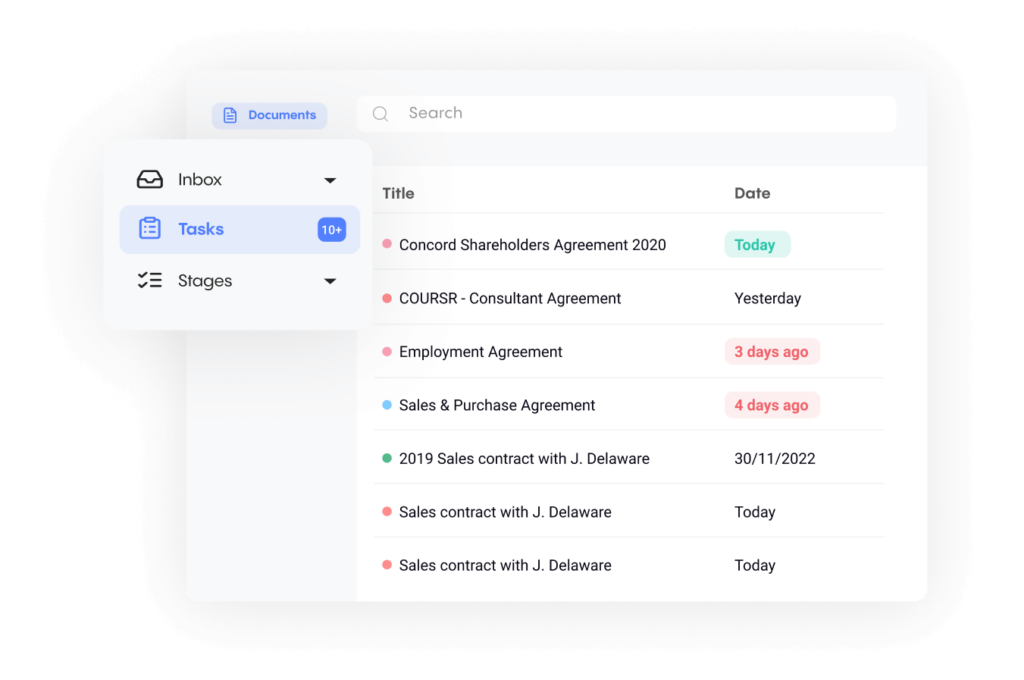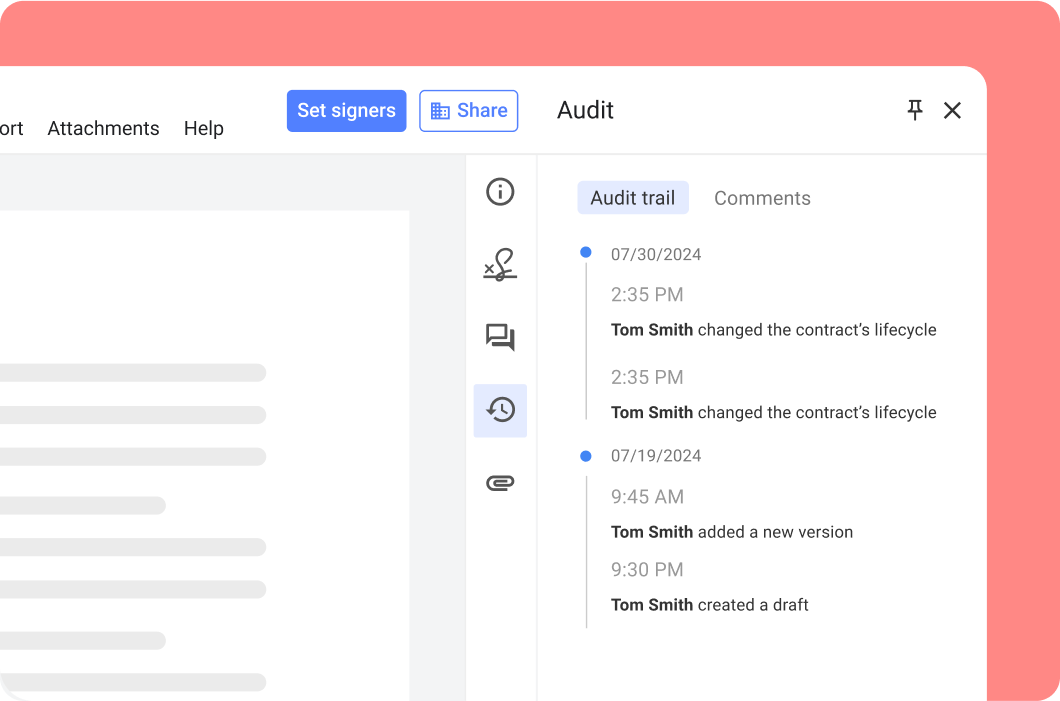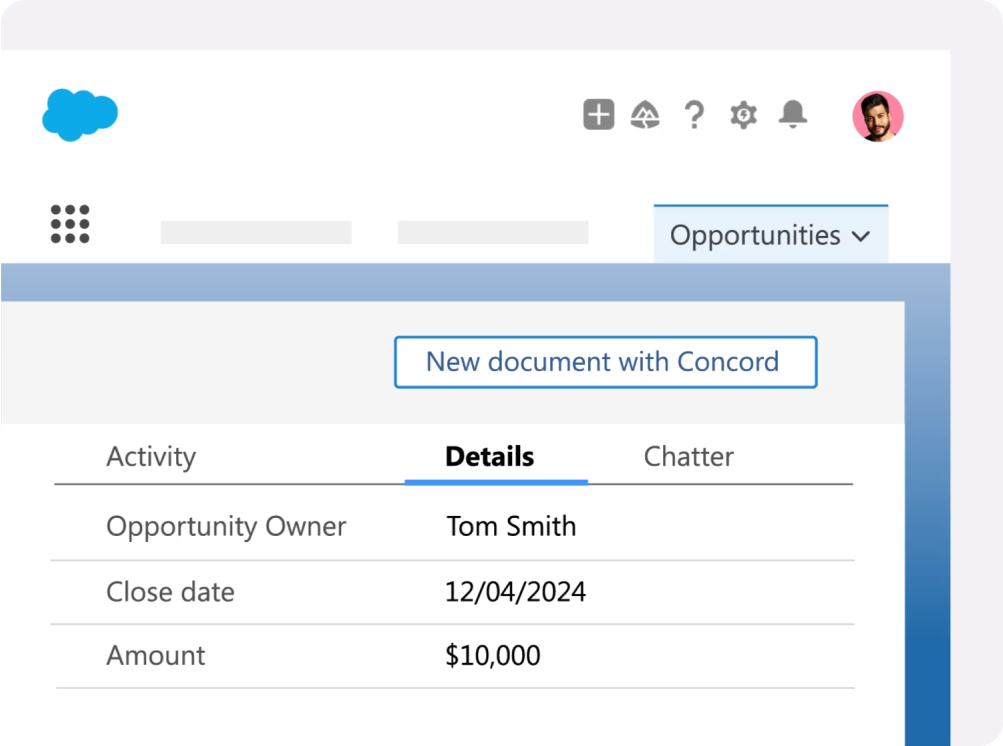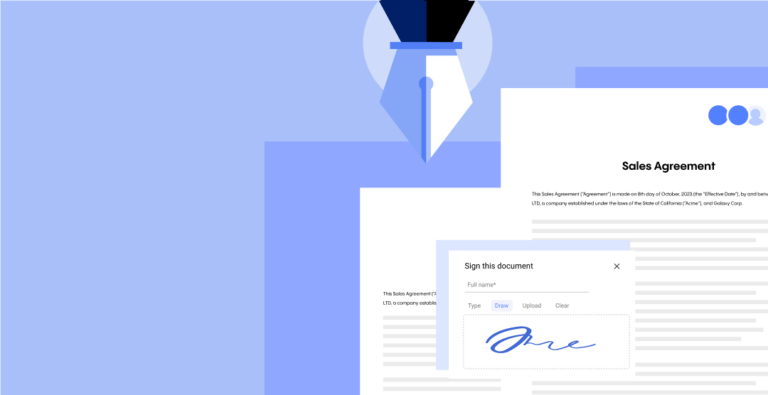Finance and operations leaders lose millions annually to a hidden productivity killer: inefficient agreement approval workflows. According to research compiled by Aberdeen and Forrester, it takes an average of 3.4 weeks to get a contract approved—a timeline that directly impacts revenue, stalls strategic initiatives, and frustrates stakeholders across the organization.
Yet leading organizations are transforming this liability into competitive advantage. By implementing intelligent agreement approval workflow systems, companies achieve 82% reductions in approval time while simultaneously improving accuracy and compliance. This isn’t incremental improvement—it’s operational transformation that delivers measurable financial impact.
The devastating cost of manual approval workflows
Manual agreement approval processes create compound problems that multiply across organizations. World Commerce & Contracting research reveals that businesses lose an average of 9.2% of annual revenue due to poor contract management, with approval delays representing a significant portion of this value erosion.
The financial hemorrhage extends beyond obvious delays. When manual reviews of 20-30 page contracts consume 4-6 hours of in-house legal time, the opportunity costs accumulate rapidly. Legal teams, already stretched thin with disproportionate ratios to other departments, become bottlenecks that slow entire organizations.
Breaking down the true impact of approval delays
Quantifying the approval workflow crisis:
| Impact Category | Average Loss | Root Cause |
|---|---|---|
| Deal velocity | Weeks of delay | Manual routing and reviews |
| Legal productivity | 4-6 hours per contract | Line-by-line manual review |
| Revenue leakage | 9.2% annually | Missed deadlines and opportunities |
| Error rates | 30% increase | Version control failures |
| Compliance risk | 40% higher | Unclear responsibilities |
These aren’t abstract metrics—they represent real money evaporating from organizational coffers. As one contract specialist at a healthcare organization captured perfectly: “I want a notification to be sent to me: ‘This contract automatically renewed for this much money.'” This simple automation could prevent millions in unnecessary renewals and unfavorable terms.
Understanding modern agreement approval workflows
Agreement approval workflow encompasses the systematic process through which contracts move from initial draft to final execution. This structured approach ensures proper review, risk assessment, and authorization at each critical juncture. In high-performing organizations, these workflows operate as finely tuned engines of business velocity rather than bureaucratic obstacles.
The evolution from paper-based approvals to digital workflows represents more than technological advancement—it’s a fundamental reimagining of how businesses validate and authorize agreements. Modern contract workflow systems transform scattered email chains and version confusion into streamlined, trackable processes.
Core components of effective approval workflows
1. Intelligent routing logic
Modern approval workflows dynamically route agreements based on contract type, value, and risk profile. A $10,000 vendor agreement follows a different path than a million-dollar partnership deal, ensuring appropriate scrutiny without unnecessary delays.
2. Parallel approval capabilities
Instead of sequential bottlenecks, advanced workflows enable simultaneous reviews by legal, finance, and operations teams. This parallel processing can reduce approval cycles from weeks to days.
3. Automated escalation triggers
When approvals stall, intelligent systems automatically escalate to designated decision-makers, preventing agreements from languishing in email inboxes.
4. Real-time visibility and tracking
Stakeholders gain instant insight into approval status, identifying bottlenecks before they impact business outcomes. As the Chancellor’s Office of California Community Colleges discovered after implementing contract tracking automation: “We’re no longer in the dark about where something stands.”
The automation imperative: Why manual processes fail at scale
According to Gartner predictions, integrating hyperautomation technology with improved operational procedures will reduce operational expenses by 30% by 2024. This isn’t speculative—organizations already implementing contract reminder software and automated workflows report immediate, measurable improvements.
The failure of manual processes becomes evident through several critical pain points:
Version control chaos
Without centralized contract management security, multiple versions circulate simultaneously, creating confusion about which terms are final. Research shows that the majority of companies struggle to locate a significant portion of their contracts—a staggering inefficiency that automated workflows eliminate.
Accountability gaps
World Commerce & Contracting reports that 40% of organizations lack clear contract responsibilities. This ambiguity creates approval paralysis, with agreements bouncing between departments without clear ownership or timeline expectations.
Compliance vulnerabilities
Manual processes increase compliance risks exponentially. Without automated audit trails and approval documentation, organizations struggle to demonstrate proper authorization during audits or disputes.
Strategic implementation of automated approval workflows
Transforming approval processes requires more than software selection—it demands strategic orchestration of people, processes, and technology. Based on successful implementations across multiple industries, this phased approach minimizes disruption while maximizing adoption.
Phase 1: Current state assessment and optimization design
Before implementing sales contract automation or other workflow tools, organizations must document existing approval processes. This baseline reveals inefficiencies and establishes metrics for improvement.
Critical assessment areas:
- Average approval cycle times by contract type
- Bottleneck identification and root cause analysis
- Stakeholder mapping and approval authority matrices
- Integration requirements with existing systems
- Compliance and audit trail requirements
Phase 2: Technology selection and configuration
PwC research indicates that enterprises implementing automated contract management systems save 2% of total annual costs. However, achieving these savings requires selecting platforms that align with organizational complexity and approval requirements.
Modern OCR contract management capabilities enable organizations to digitize existing contracts and extract approval-relevant data automatically. This eliminates manual data entry while establishing a foundation for intelligent routing.
Platform evaluation criteria:
- No-code workflow configuration capabilities
- Integration with existing business systems
- Mobile approval functionality
- Customizable escalation rules
- Comprehensive audit trail generation
Phase 3: Pilot implementation and refinement
Successful organizations start with high-volume, standardized agreements before expanding to complex contracts. A Fortune 500 technology company began with vendor agreements under $50,000, achieving 75% approval time reduction before expanding to enterprise partnerships.
This measured approach allows organizations to:
- Validate workflow logic with low-risk agreements
- Build stakeholder confidence through quick wins
- Refine approval rules based on real-world usage
- Train power users who become internal champions
Phase 4: Scaled deployment and continuous optimization
As organizations expand automated workflows, they unlock compound benefits. Advanced contract management reporting provides insights into approval patterns, enabling continuous refinement of routing rules and escalation triggers.
Industry-specific approval workflow considerations
Different sectors face unique approval challenges shaped by regulatory requirements, transaction volumes, and stakeholder complexity. Understanding these nuances ensures workflow automation delivers maximum impact.
Healthcare: Compliance-driven approval orchestration
Healthcare organizations navigate complex approval requirements spanning HIPAA compliance, provider credentialing, and payer negotiations. Automated workflows must accommodate:
- Multi-level clinical and administrative approvals
- Regulatory documentation requirements
- Provider privilege verification integration
- Audit-ready approval documentation
One regional health system reduced provider contract approval time from 45 to 7 days by implementing parallel approval workflows with automated contract compliance audit capabilities.
Manufacturing: Supply chain velocity optimization
Manufacturing enterprises managing thousands of supplier agreements require approval workflows that balance speed with risk management. Key considerations include:
- Automated risk scoring based on supplier profiles
- Integration with procurement systems
- Multi-currency and jurisdiction handling
- Quality agreement linkage
A global manufacturer streamlined their most efficient CLM for handling vendor agreements, reducing supplier onboarding from 30 to 5 days while improving compliance rates by 60%.
Financial services: Risk-weighted approval acceleration
Financial institutions balance stringent regulatory requirements with competitive pressure for rapid deal closure. Effective approval workflows incorporate:
- Automated regulatory compliance checks
- Risk-based approval thresholds
- Real-time credit and KYC integration
- Audit trail requirements for examiner reviews
Measuring approval workflow performance
Organizations implementing automated approval workflows must track performance metrics that demonstrate both operational efficiency and financial returns. According to research, businesses implementing workflow automation save an average of 18 hours per week—time that translates directly to bottom-line impact.
Key performance indicators for approval workflows
Efficiency metrics:
- Average approval cycle time (target: 2-3 days vs. 3.4 weeks baseline)
- First-pass approval rate (target: >85%)
- Escalation frequency (target: <15% of approvals)
- Mobile approval adoption (target: >60% of approvers)
Quality metrics:
- Post-approval amendment rate (target: <5%)
- Compliance audit findings (target: zero critical findings)
- Stakeholder satisfaction scores (target: >4.5/5.0)
- Version control incidents (target: zero)
Financial impact metrics:
- Cost per approval (target: 70% reduction)
- Revenue acceleration from faster approvals
- Avoided costs from prevented auto-renewals
- Productivity gains in hours saved
Organizations using contract management dashboard examples report that visual performance tracking drives continuous improvement and stakeholder buy-in.
Advanced strategies for complex approval scenarios
As organizations mature their approval automation, they encounter complex scenarios requiring sophisticated workflow orchestration. These advanced strategies separate leading organizations from those merely digitizing existing processes.
Multi-party agreement orchestration
Complex agreements involving multiple external parties require sophisticated approval choreography. Leading organizations implement:
- Sequential and parallel approval combinations
- External party integration via secure portals
- Automatic notification of approval dependencies
- Real-time status visibility for all parties
Dynamic approval routing based on AI risk assessment
Advanced platforms incorporate AI-driven risk scoring that automatically adjusts approval requirements. High-risk clauses trigger additional reviews, while standard terms follow expedited paths. This intelligent routing ensures appropriate scrutiny without unnecessary delays.
Conditional approval workflows
Sophisticated workflows accommodate conditional approvals with automatic escalation for exception handling. For example, finance approval might be conditional on specific payment terms, with automatic legal re-review if terms change during negotiation.
Common pitfalls and mitigation strategies
Despite clear benefits, organizations encounter predictable challenges when implementing automated approval workflows. Learning from these common pitfalls accelerates success.
Pitfall 1: Over-engineering initial workflows
Organizations often attempt to automate every possible scenario immediately, creating complexity that hinders adoption.
Mitigation strategy: Start with the 80/20 rule—automate the 20% of approval types that represent 80% of volume. Build complexity gradually as users gain comfort with the system.
Pitfall 2: Insufficient change management
Even the best technology fails without user adoption. Stakeholders accustomed to email-based approvals may resist new systems.
Mitigation strategy: Implement comprehensive change management including executive sponsorship, role-specific training, and celebrating early wins publicly. As one implementation leader noted: “Success stories from peer departments drove adoption faster than any training session.”
Pitfall 3: Neglecting mobile optimization
Modern approvers expect to review and approve contracts from anywhere. Systems lacking robust mobile capabilities create new bottlenecks.
Mitigation strategy: Prioritize platforms with native mobile apps or responsive designs. Test approval workflows on various devices before full deployment.
Pitfall 4: Inadequate integration planning
Isolated approval systems create data silos and duplicate effort. Without proper integration, efficiency gains evaporate.
Mitigation strategy: Map integration requirements during initial planning. Prioritize platforms with pre-built connectors for your existing legal operations software and business systems.
The transformation imperative: From cost center to value driver
Agreement approval workflows represent a clear opportunity to transform legal and operations functions from perceived bottlenecks into business accelerators. Organizations achieving 82% reductions in approval time don’t just save money—they fundamentally change how quickly they can respond to market opportunities.
The compound effect of faster approvals ripples through organizations:
- Sales teams close deals faster, improving quota attainment
- Procurement captures early payment discounts through rapid vendor onboarding
- Legal departments shift focus from administrative tasks to strategic counseling
- Finance gains predictability through improved contract visibility
As McKinsey research indicates, 60% of employees could save 30% of their time with workflow automation. For approval workflows, this translates to thousands of hours redirected toward value-creating activities.
Future-proofing your approval workflow strategy
The approval workflow landscape continues evolving with technological advances. Organizations must build flexibility into their strategies to capitalize on emerging capabilities while avoiding obsolescence.
Emerging trends shaping approval workflows
Predictive approval intelligence: Machine learning algorithms will predict approval likelihood and suggest optimizations before submission, reducing iterations and accelerating cycles.
Blockchain-based approval verification: Immutable approval records on distributed ledgers will enhance trust in multi-party agreements while reducing verification overhead.
Natural language approval interfaces: Conversational AI will enable approvers to review and approve contracts through voice commands and natural language queries.
Integrated risk and approval orchestration: Real-time risk assessment will dynamically adjust approval requirements, ensuring appropriate oversight without unnecessary friction.
Taking decisive action
The gap between organizations with modern approval workflows and those clinging to manual processes widens daily. While laggards lose weeks to approval delays, leaders close deals in days. This isn’t just operational efficiency—it’s competitive advantage that compounds over time.
For finance and operations leaders ready to transform approval bottlenecks into business velocity, the path forward is clear:
- Assess your current state: Document existing approval times and identify bottlenecks
- Calculate your opportunity cost: Multiply weekly approval delays by average deal value
- Define success metrics: Establish targets for approval time reduction and cost savings
- Select the right platform: Choose solutions with proven ROI and rapid implementation
- Start with quick wins: Begin with high-volume, standardized agreements
- Scale systematically: Expand to complex approvals as adoption grows
- Measure and optimize: Use analytics to continuously refine workflows
The tools exist, the ROI is proven, and the implementation path is clear. Organizations that transform their approval workflows today will lead their industries tomorrow, while those that hesitate will struggle to keep pace in an increasingly automated business landscape.
Remember: every day of delay in implementing automated approval workflows represents thousands of dollars in lost productivity and missed opportunities. The time for transformation is now.
Frequently asked questions
What exactly is an agreement approval workflow?
An agreement approval workflow is the systematic process by which contracts and agreements move through required reviews, authorizations, and sign-offs before execution. Modern workflows use automation to route agreements to appropriate stakeholders based on predefined rules, track approval status in real-time, and ensure compliance with organizational policies. Unlike manual email-based approvals, automated workflows provide visibility, accountability, and dramatic time savings.
How long does it take to implement an automated approval workflow system?
Implementation timeframes vary based on complexity, but modern cloud-based solutions can be operational in days rather than months. For example, Concord’s platform can be implemented in as little as a single day for basic workflows, compared to enterprise platforms requiring 6+ months. Most organizations see initial results within 30 days, with full deployment across all agreement types typically complete within 90 days.
What’s the real ROI of automating agreement approval workflows?
Organizations implementing automated approval workflows see immediate, measurable returns. Aberdeen research shows an 82% reduction in contract approval time, while organizations save an average of 18 hours per week through automation. PwC studies indicate 2% savings on total annual costs. For a mid-size company processing 500 agreements annually, this translates to hundreds of thousands in productivity gains and prevented revenue leakage.
How do automated workflows handle complex approval scenarios?
Modern workflow platforms handle complexity through conditional logic, parallel routing, and dynamic escalation rules. For example, agreements under $50,000 might require only departmental approval, while larger deals trigger finance, legal, and executive reviews. The system automatically adjusts routing based on contract attributes, ensures all required approvals are obtained, and escalates when delays occur—all without manual intervention.
What are the biggest challenges in transitioning from manual to automated approvals?
The primary challenges include change resistance from teams comfortable with email-based approvals, concerns about losing control over the process, and integration with existing systems. However, these are overcome through phased implementation, comprehensive training, and selecting user-friendly platforms. Organizations report that once stakeholders experience the time savings and increased visibility, adoption accelerates rapidly.
How does approval workflow automation improve compliance and reduce risk?
Automated workflows create comprehensive audit trails documenting who approved what and when, ensuring compliance with internal policies and external regulations. They prevent unauthorized agreements from proceeding, enforce approval hierarchies, and flag high-risk terms for additional review. This systematic approach reduces compliance violations by up to 60% while providing documentation needed for audits and disputes.
Bibliography
- Aberdeen Group and Forrester Research. “Contract Approval Cycle Time Analysis.” Cited in Outlaw blog, December 15, 2020.
- World Commerce & Contracting. “The Purpose of Contracts: Global Benchmark Report 2024.” November 11, 2024.
- Gartner, Inc. “Hyperautomation and Operational Expense Reduction Forecast 2024.” Cited in Quixy blog, April 15, 2024.
- PricewaterhouseCoopers (PwC). “Contract Management and Automation Services: ROI Analysis.” Cited in Contract Logix, June 9, 2023.
- Formstack. “2022 State of Digital Maturity Report: Workflow Automation Time Savings.” 2022.
- McKinsey & Company. “The Future of Work: Automation Potential Across Industries.” Cited in multiple workflow automation analyses, 2024.
- California Community Colleges Chancellor’s Office. “Agreement Approval Process Transformation Case Study.” SimpliGov, April 10, 2024.
- Deloitte. “Unlocking the Value of Agreement Management: 2024 Research Report.” 2024.
- HyperStart. “Contract Approval Workflow: A Comprehensive Guide.” June 5, 2024.
- Procurement Tactics. “Contract Management Statistics 2025 – 55 Key Figures.” April 24, 2025.



